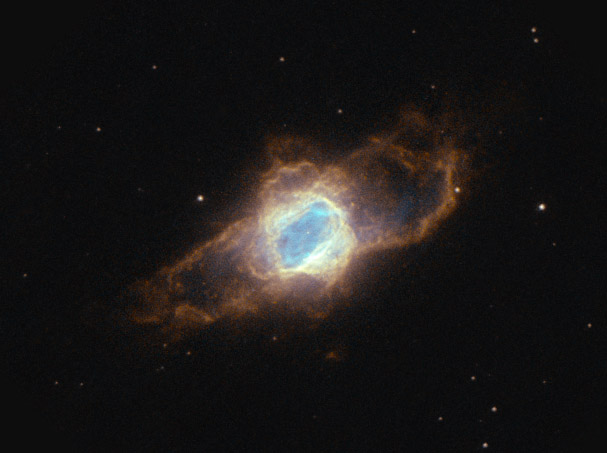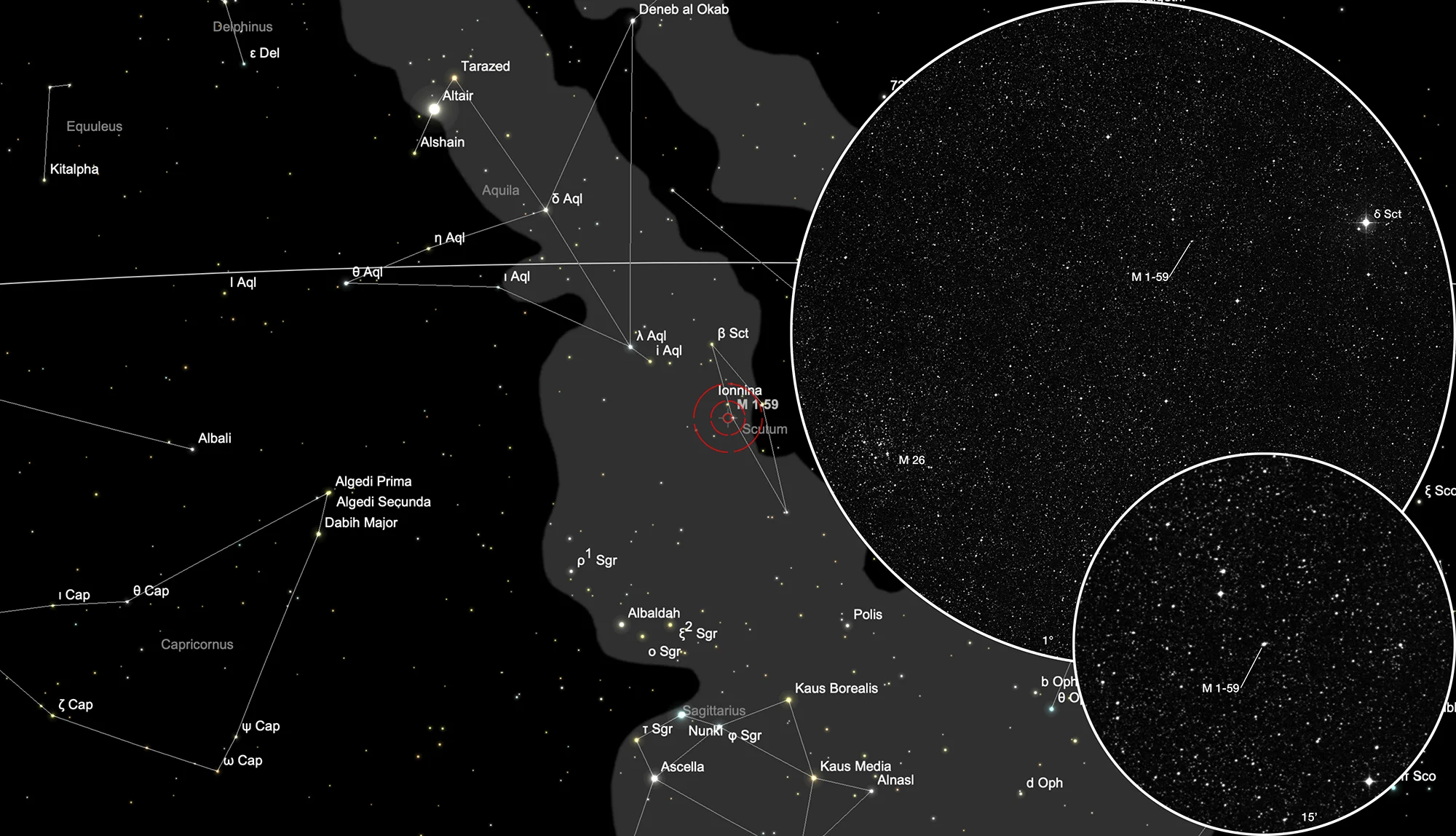Planetary Nebula Minkowski 1-59

History
The planetary nebula was discovered in 1946 by the German-American astronomer Rudolph Minkowski. He detected objects with little or no continuous H-α spectrum on objective-prism survey plates obtained by W. C. Miller using the 10-inch telescope at Mount Wilson. Further examination of its appearance on direct photographs, taken at the Newtonian focus of the 60-inch or 100-inch telescope on Mount Wilson, revealed its nature as a planetary nebula. [397]
Physical Properties
M 1-59 is a bi- or multipolar planetary nebula with at least three pairs of closed-end bipolar lobes and a hollow shell in the centre. The kinematic age is estimated to 4050 years. The photometric magnitudes through different filters are: J 12.328; H 12.205; K 11.225. Given distances range from 1.2 kpc to 5.5 kpc. [145, 613]
| Designations | PN G023.9-02.3: M 1-59, PK 23-02.1, ARO 289, Sa 2-358, VV 202, VV' 442 |
| Right Ascension (J2000.0) | 18h 43m 20s |
| Declination (J2000.0) | -09° 04' 49" |
| Dimensions | 4.6" (optical), 4.8" (radio) |
| Distance | 1.45 kpc |
| Radial Velocity | +99.0 ± 11.4 km/s |
| Expansion Velocity | 13.0 (O-III) km/s |
| Discoverer | MINKOWSKI 1946 |
Finder Chart
The planetary nebula Minkowski 1-59 is located in the constellation Scutum, circa 0.5° east of the 4.7 mag bright star δ Scuti and about a quarter towards the open cluster Messier 26.
Visual Observation
400 mm Aperture: In the 21 mm Tele Vue Ethos (85x) the PN appears as a small dot among stars. In the 9 mm Nagler, the dot is slightly larger but hardly more than a star. — 400 mm f/4.5 Taurus Dobsonian, Gurnigel, 19. 8. 2023, Bernd Nies
